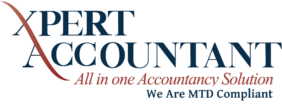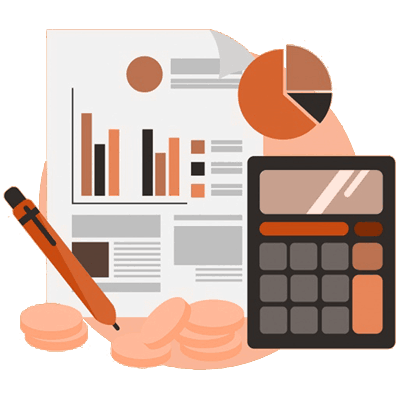21 Tax Saving Hacks
Introduction
Tax is simply a set of rules applied across a broad spectrum of businesses. Over time as more and more different taxes have emerged these rules have become increasingly complex. These hacks are not meant as a substitute for the knowledge and skill of an experienced tax professional, they are meant to highlight areas directors should consider if they wish to minimise their tax liabilities in a compliant way.
- Avoid penalties.
There are financial penalties imposed within the taxation system (and the accounts filing requirements for limited companies) for: not filing returns on time; errors and omissions in filings; and for late payment of taxes. These penalties are cumulative; can become substantial; and are not themselves allowable as an expense against future taxation.
Avoid them by diarising them:
Corporation tax: the return is due 12 months after the period end; any tax due is payable 9 months after the period end.
Accounts: Accounts must be filed at Companies House no later than 9 months after the company year-end.
VAT: The quarterly return must be submitted and any VAT due paid within one month and 7 days of the quarter end
PAYE: Payment is due by the 22nd of the following month
Self-assessment return and payment is due by 31st January
Keeping proper records so the information exists to prepare them, and
Retain sufficient funds in the limited company bank account to pay them as they fall due.
- Record keeping.
There are legal and tax requirements on record keeping. Keeping good records is also fundamental to tax savings. The sophistication of the bookkeeping system need not be too onerous to achieve this. It will be determined by the informational requirements of the business but for a small business a freeware app linking to the bank account and retaining copies of source documentation (e.g., purchase invoices) on the cloud should be sufficient.
The company bank account belongs to the company not to you. You should not corrupt it by using it to pay personal expenses, on the other hand by paying all business expenses through it you create a comprehensive record of them to claim against tax.
- Pre-incorporation expenses.
Keep a record of expenses incurred on the business before you incorporated it as these are allowable against its tax and (subject to certain time limits) available for VAT reclaim. You may for example have undertaken market research or purchased stock samples.
- Assets Introduced.
Keep a record of any assets you owned personally prior to setting up the limited company that are subsequently used in it. These might more obviously be a van or tools, but usually include computer hardware; a smart phone and office equipment. Allocate a fair value to the assets at the point of incorporation with regard to its initial cost and its age at that time.
- Initial Investment.
There are schemes such as BIS and SEIS which encourage new business start-ups by offering personal tax benefits to investors. In some circumstances some of these are available to directors.
- Shareholders.
It may be advantageous to transfer some of your shares in the limited company to your partner. This may make use of their otherwise unused personal tax allowances, or shift some of your higher rate taxed income to their base rate band.
- Dividends.
Owner directors of limited companies can choose to take their monies from a limited company as either payroll or dividends. Dividends attract a lower rate of personal tax than payroll would including national insurance amounts.
Dividends do not count towards national insurance contributions however, so it is worthwhile running a PAYE scheme and taking the first £9,500 as payroll. This is sufficient to credit you with national insurance contributions without you having to actually make any.
- Pension contributions.
Pension contributions made by a limited company for its directors are allowable against its corporation tax liability (up to the current £40,000 annual limit.)
- Use of Home as Office.
You can charge use of home as office against tax if you do any work at home. You should formalise this expense claim with a Use of Home as Office Agreement. Prepare a computation in support of the tax expense claim. Add-up all of the direct expenses of maintaining the home (rent or mortgage interest; council tax; heat light power; water; repairs; insurance.) Apply to that a percentage based on the area of the dwelling occupied by the business and the time so occupied.
- Charity donations.
Donations to (UK and EU registered) charities by a company are allowable for corporation tax. If these are alternatively made individually then tax savings on them will only accrue to higher rate taxpayers.
- Key man insurance.
Allowable as a business expense for taxation, key man insurance is a means for the remaining directors to acquire your shares in the business should you suffer death or serious illness. They would need to do this to keep on running it and the lump sum would be compensation to you or your estate.
- Motor expenses.
Unless business motor expenses are substantial (travelling salesman or taxi driver) then the easiest and most beneficial way to claim them against tax is to record business mileage and claim 45p per mile against tax. In return all business expenses should be borne personally apart from parking and tolls (which should be paid through the business bank account.) If the business incurs the motor expenses directly then there are complex clawbacks for private use and the requirement to complete P11D’s.
- Motor vehicles.
The tax treatment of commercial vehicles (including VAT reclaims) is more generous than for cars. If appropriate for your business it may be advantageous to purchase a car-derived van with the back windows filled in and a prominent sign-written advert on the side, rather than a car.
- VAT Elections Cash Accounting.
Consider cash accounting for VAT. This is not only easier for bookkeeping but will improve the cash flow position of the company and automatically account for VAT on bad debts.
- VAT Elections Flat rate Scheme.
If you meet the turnover and value of materials purchased criteria then evaluate whether an election for the VAT flat rate scheme would be advantageous. Under this you owe a fixed percentage of you sales value plus the 20% VAT, invoiced in VAT payable by you. Different percentages apply to different businesses. If you purchase a low amount of goods and services with VAT on them then you could save a substantial amount in the VAT you owe, and it is also easier to complete the VAT returns.
- Timing of capital expenditure.
At the year-end, review any planned capital expenditure. At the extreme bringing it forward by a day would make it allowable against this year’s corporation tax liability, rather than a year later.
- Buy-to-lets.
If you are investing in a buy-to-let do so through a limited company and not personally. There is an extra level of stamp duty payable, but all of the mortgage interest is allowable against tax, which is not the case for a higher rate taxpayer individually.
- Research & development tax credits
If the company undertakes any research and development, perhaps a new product process or software development then this relief is available. The project has to meet certain technical criteria, but if these exist then costs expended on it can be grossed by a further 130% for tax purposes. This can: reduce the amount of corporation tax payable; be carried back to claim repayment of corporation tax paid in earlier years; or even sold back to the government.
- Other instances of tax claim uplift.
There are other instances of business expenditure which can be grossed up for tax purposes, such as expenditure on asbestos removal. It is always worth checking specifics particularly on environmentally favourable expenses.
20. Corporate vs personal tax.
Company profits are subject to corporation tax based on the company profits. In addition, you are liable to personal taxes based on your income from the company. Annually you have a personal tax allowance of £12,500 and a dividend allowance of £2,000. Income above this is taxed at basic rate, which doubles if it exceeds £50,000. The amount of personal tax liability is dependent on how much money you take out of the company. Keeping this under review might enable you to adjust your withdrawals accordingly and keep yourself in lower tax bands.
- Closing the limited company.
You may want to close the limited company, perhaps because you have found PAYE employment. If there are remaining assets in the company (e.g., bank balances) then these can be paid out to you as dividends as a director (income) or as a capital gain on disposal of shares. By taking them as a capital gain you may well utilise your otherwise unused annual capital gains allowance. You may then be able to further claim Entrepreneurs Relief, under which you will only pay capital gains tax at 10% on the balance.
A final word.
The purpose of a business is to make profits. Don’t make decisions based on the amount of tax payable from them. Make decisions to maximise profits, and it is better to pay a large amount of tax on a massive amount of profit, than a small amount of tax on a small profit. On the other hand, you get no credit for paying more tax than you need to, and you owe it to yourself to consider all available hacks.

